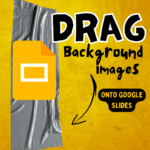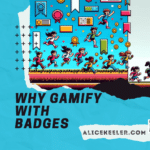In the realm of literary analysis, close reading stands out as a pivotal skill, allowing readers to delve deeply into texts to uncover nuanced meanings and underlying themes. It’s an art that transforms the reading experience, enriching our understanding and appreciation of literature. In this insightful exploration, Barton Keeler, a seasoned high school English teacher, is set to unveil the key to close reading:
I am not an expert in close reading but have tried a variety of methods and approaches. What I discovered is that when I have a great essential question everything goes well – kids are engaged, they’re diving deep and thinking creatively. In fact, if my question is good enough I don’t need much else. My essential question works best if it contains the three following components. Every great essential question should be:
1. The Question Should Be Open-Ended and Ambiguous
I really think this is the key to engagement. If the reading’s purpose is a simple matter of “finding the answer” then students tend to disengage because the assignment becomes something little more than a comprehension worksheet.
I usually introduce the concept of close reading with an activity I call “active viewing,” using a classic episode of the “Twilight Zone.” The episode “Nightmare at 20,000 Feet” works really well. (This is the episode where Robert Wilson (William Shatner) boards an airplane and witnesses a gremlin on the wing tearing up the plane.) Students fold a piece of paper in half creating two columns labeled Sane and Insane. As I show the episode students are tasked with looking for evidence that the protagonist is “sane” (column A) or “insane” (column B).

This episode works well because there is plenty of evidence on both sides and several facts can be used as evidence for both depending on how they’re used. I have viewed this episode at least 30 times and still…each time I wonder if I got it right last time…and I sit, engaged, looking for more evidence. Every year I use this assignment at least one student finds something new or brings up a new piece of evidence that I had overlooked. I usually wrap up the assignment with a discussion/debate and have students write a paragraph laying out their own argument by marshaling the best evidence offered and explaining away the best evidence to the contrary. A deliciously ambiguous reading/viewing coupled with an open ended question will provide an opportunity for students to really dig in to the text.
2. The Question Should Be Either/Or
This is especially true for beginners or struggling readers. When I have my students take out a blank piece of paper and draw a line down the middle, I simply ask them to gather evidence from the reading that A is the case or B is the case. Students then jot down all the facts that support A being true and all the facts that support B being true. For example, when my freshmen read “The Cask of Amontillado” I ask them to find evidence that A) the narrator is sane or B) the narrator is insane. I will always have a few students that want to come up with their own theory which is fantastic, but for most students this is sufficient to get them to read and reread and examine the evidence in the text.

3. The Question Should Be Heavy
Serious questions are engaging questions. The question should cause the student to ponder life’s great questions and ultimately cause them to question their worldview. This isn’t mandatory but I find that these types of questions really lend a sense of urgency to the task. When reading Frankenstein, I challenge my students with the question: Who is more human, Victor Frankenstein or his monster? I like this question because it forces the student to question what it mean to be human. Ultimately it is asking what they believe the nature of man to be. Is it good or evil?
Not every reading lends itself to a question with these three characteristics but when it does, I find a definite increase in student engagement and productivity.
Barton Keeler teaches high school English.

Additional Tips for Close Reading
1. Choose the Right Text:
Select a text that is rich in content and has depth. Literary works that are complex and layered are ideal for close reading.
2. Read Multiple Times:
Read the text several times. In the first reading, understand the basic plot or argument. In subsequent readings, pay closer attention to the details, patterns, and structures.
3. Annotate Liberally:
While reading, make notes in the margins. Highlight or underline key phrases, words, or sentences. Write down questions, reactions, or thoughts that come to mind.
4. Examine Language and Diction:
Pay attention to the author’s choice of words. Ask yourself why certain words are used and what impact they have on the tone and meaning of the text.
5. Look for Patterns:
Identify any patterns in the text, such as recurring motifs, themes, images, or symbols. These patterns often contribute to the deeper meaning of the work.
6. Consider Structure and Form:
Analyze the structure of the text. How is it organized? Look at paragraph structure, stanza forms, sentence length, and punctuation. These elements can reveal much about the underlying message.
7. Analyze Characters and Relationships:
In fiction or drama, examine how characters are developed and how their relationships with each other contribute to the narrative.
8. Delve into Historical and Cultural Context:
Understand the historical, cultural, and social context in which the text was written. This can provide insights into the themes and perspectives presented in the work.
9. Ask Questions and Seek Answers:
Challenge yourself to ask difficult questions about the text. What is the author trying to say? How do different elements of the text contribute to its overall meaning?
10. Discuss with Others:
Engage in discussions with others who have read the text. Sharing interpretations and insights can deepen your understanding and reveal aspects of the text you may have overlooked.
Remember, close reading is not just about understanding what a text says, but also how it says it and why. It’s a skill that develops over time and with practice. Happy reading!









